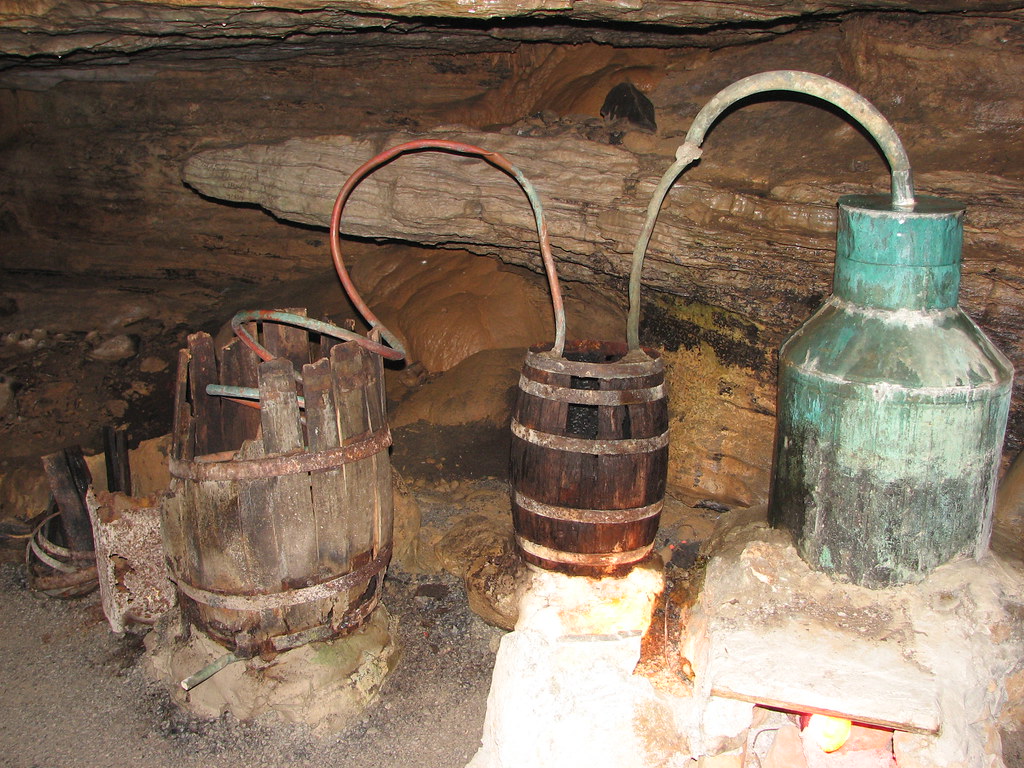When visiting Gatlinburg and Pigeon Forge, you will find numerous distilleries where you can sample and purchase authentic “white lightning”’. Up until the last decade or so, the practice was illegal, but today making moonshine is big (and legal) business. Here is some history of moonshine - an iconic part of life in Tennessee’s Smoky Mountains.
A Centuries-Old Tradition.
The origins of moonshine can be traced back across the Atlantic to Scotland and Ireland. In these countries, making and drinking whiskey were time-honored traditions. When Scottish and Irish immigrants made their way to the Appalachian mountains, they used local corn to distill whiskey for their community to enjoy.
For decades, Smoky Mountains residents made whiskey without any trouble. However, everything changed when the federal government passed a new $2 per gallon excise tax on whiskey. This 20 cents hike in the tax proved too much for many mountain folks, so they simply refused to pay it.
Why the “moonshine”?

The daring men who decided to produce whiskey outside the bounds of the law became known as “moonshiners”. The name “moonshine” is derived from the fact that the illicit alcohol was often secretly distilled during the night, in the mountains, under the light of the moon.
Making moonshine became an important revenue stream for many farmers in the Smoky Mountain area. Extra corn - transformed into whiskey - was more valuable, simpler to move, and easier to sell and trade, a “liquid currency” of sorts! Farmers used the extra cash they made from selling moonshine to provide for their families, pay their bills, and start new businesses.
Some of the most popular areas for making Smoky Mountain moonshine included Wears Valley, Pittman Center, English Mountain, and Cosby. The underground cave that is known as Forbidden Caverns was also a favorite spot for moonshiners because of its remote location and reliable clean water supply (an underground lake). Forbidden Caverns visitors will see an old moonshine still during their tour.
Legendary Moonshiners.

The moonshine trade in the Smoky Mountains spawned some notorious or even legendary characters. The distiller Lewis Redmond, a native of the North Carolina side of the Smokies, became almost a mythic figure when he shot and killed a deputy who tried to arrest him in 1876. Redmond became a Robin Hood-like outlaw, evading the lawmen and sharing his moonshine money with Appalachian residents. Arrested in 1881 and eventually pardoned by President Chester A. Arthur, Redmond went on to work in a government-run distillery in South Carolina.
The most famous contemporary moonshiner was Marvin “Popcorn” Sutton, who was active in both Tennessee and North Carolina. Popcorn Sutton became a celebrity after appearing in various documentaries and releasing an autobiography called “Me and My Likker”. Sutton was busted by the feds in 2007, but he died before serving his sentence.
Where to Try Smoky Mountains Moonshine.


Around 2009, changes in Tennessee state law paved the way for the creation of legal moonshine. Today, you can visit a number of awesome distilleries that sell authentic white whiskey. For just a few dollars you can sample moonshine right in the store, and that money is applied to the purchase of any jar of moonshine you want to take home. Moonshine comes in a seemingly endless variety of flavors, including apple pie, sweet tea, lemon, blackberry, and many more. Here are some of the most popular moonshine distilleries in the Smoky Mountains:
Ole Smoky Moonshine
Doc Collier Moonshine
Sugarlands Distilling Company
Old Forge Distillery
Adventure Distilling Company (Cosby)